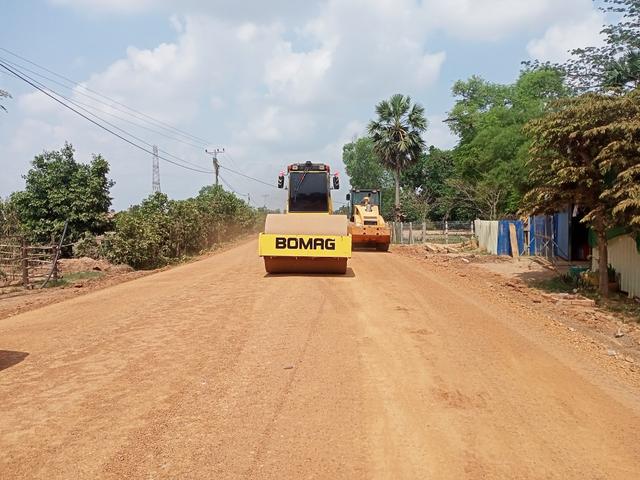
INTRODUCTION
From September to November 2020, Cambodia experienced heavy rainfall across the country. The heavy rains caused extensive flooding in 20 out of 25 provinces, leaving an estimated 800,000 people directly affected, of which 49% (388,000 people) had pre‐existing vulnerabilities. The floods have caused damage to key transport infrastructure and loss of economic activities. According to the rapid damage and needs assessment conducted by the World Bank at the request of the Ministry of Economy and Finance (MEF), economic loss due to flooding was estimated at US$ 448‐490 million. Three sectors that were most affected include transport, irrigation, and agriculture, concentrating in nine provinces. Total costs for rehabilitation of the damaged transport infrastructure were approximately US$508 million. It was noted that these floods came amidst a drought which did not only cause widespread crop failure, loss of assets, disruption of livelihoods but also exacerbate the inherent vulnerability of numerous households who are disadvantaged and are in areas that are prone to floods, other natural hazards.
The purpose of the second Cambodia Southeast Asia Disaster Risk Management Project (KHSEADRM2) is to support the government in its short‐term effort to reconstruct the transport infrastructure affected by the flash floods in 2020, thereby resuming overall transport connectivity. In a longer term, the project aims to support the government to enhance its capacity and resilience to future impact of natural disaster risks through improving and mainstreaming disaster risk management (DRM) dimensions into its national long‐term disaster risk management strategy, particularly in transport infrastructure. The KH‐SEADRM 2 Project is built on the on‐going KH‐SEADRM project (P160929) and will finance resilient post‐disaster road reconstruction of approximately 400km of rural roads and bridges in selected provinces that are affected by floods, including Banteay Meanchey, Battambang, Kampong Speu, Kampong Chhnang, Pursat, Siem Reap and Tbung Khnum provinces. Among these, infrastructure reconstruction activities will be mainly in Banteay Meachey, Battambang, Pursat, and Siem Reap which are among the poorest provinces where rural roads are badly damaged. In addition to support in infrastructure rehabilitation, the project also strengthens institutional capacity in DRM planning in national and rural development sector, including policy making processes. The project will also respond to crisis and emergencies related to natural disaster risks if these happened during project life.

